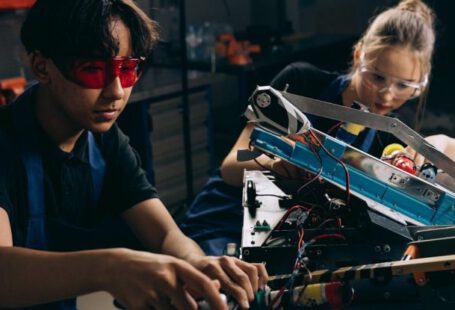Gamification has revolutionized the way we learn, offering a dynamic and engaging approach that leverages game mechanics to enhance the learning experience. This innovative concept has gained significant traction in educational settings, proving to be a powerful tool in capturing and maintaining student interest. By incorporating elements such as points, badges, leaderboards, and rewards into learning activities, gamification has the potential to transform traditional education methods and drive improved outcomes. Let’s delve into the influence of gamification in learning and explore its numerous benefits.
Enhanced Engagement and Motivation
One of the key benefits of gamification in learning is its ability to boost engagement and motivation among students. By introducing game-like elements into educational content, such as challenges, competition, and rewards, learners are more likely to stay focused and actively participate in the learning process. The interactive nature of gamified activities captures students’ attention and encourages them to invest time and effort in mastering the material. This heightened engagement leads to increased motivation to succeed and a more positive attitude towards learning.
Personalized Learning Experience
Gamification allows for a personalized learning experience tailored to individual student needs and preferences. By incorporating elements of choice and autonomy, such as allowing learners to progress at their own pace or select activities that align with their interests, gamified learning platforms can cater to diverse learning styles. This customization not only enhances student engagement but also promotes a deeper understanding of the material by catering to the unique strengths and weaknesses of each learner. As a result, students are more likely to retain information and apply their knowledge in real-world scenarios.
Improved Knowledge Retention and Mastery
The interactive and immersive nature of gamification fosters better retention of information and mastery of concepts. By presenting educational content in a format that mimics games, learners are more likely to remember and understand the material. The use of challenges, quizzes, and simulations not only reinforces key concepts but also provides immediate feedback, allowing students to track their progress and identify areas for improvement. This iterative process of learning and feedback contributes to a deeper understanding of the material and promotes long-term retention of knowledge.
Collaboration and Social Learning
Gamification encourages collaboration and social interaction among students, fostering a sense of community and camaraderie in the learning environment. By incorporating multiplayer elements, such as team-based challenges or cooperative activities, gamified learning platforms promote teamwork and communication skills. Students have the opportunity to work together towards a common goal, share knowledge and insights, and learn from each other’s experiences. This collaborative approach not only enhances the learning experience but also prepares students for real-world situations that require effective teamwork and communication.
Real-World Application and Skills Development
Gamification provides a platform for the application of knowledge in real-world scenarios, allowing students to practice and develop practical skills in a simulated environment. By presenting challenges and tasks that mirror authentic situations, learners can apply their knowledge and problem-solving abilities in a hands-on context. This experiential learning approach not only reinforces theoretical concepts but also cultivates critical thinking, decision-making, and creativity. The transferability of skills acquired through gamified learning activities to real-world settings equips students with the competencies needed to succeed in their academic and professional endeavors.
In conclusion, the influence of gamification in learning is undeniable, offering a myriad of benefits that enhance student engagement, motivation, and learning outcomes. By leveraging game mechanics to create interactive and immersive learning experiences, educators can transform traditional teaching methods and empower students to become active participants in their education. The personalized nature of gamification promotes individualized learning experiences, while the collaborative and experiential elements foster social interaction and skills development. As we continue to explore the potential of gamification in education, it is clear that this innovative approach has the power to revolutionize learning and unlock the full potential of every student.





